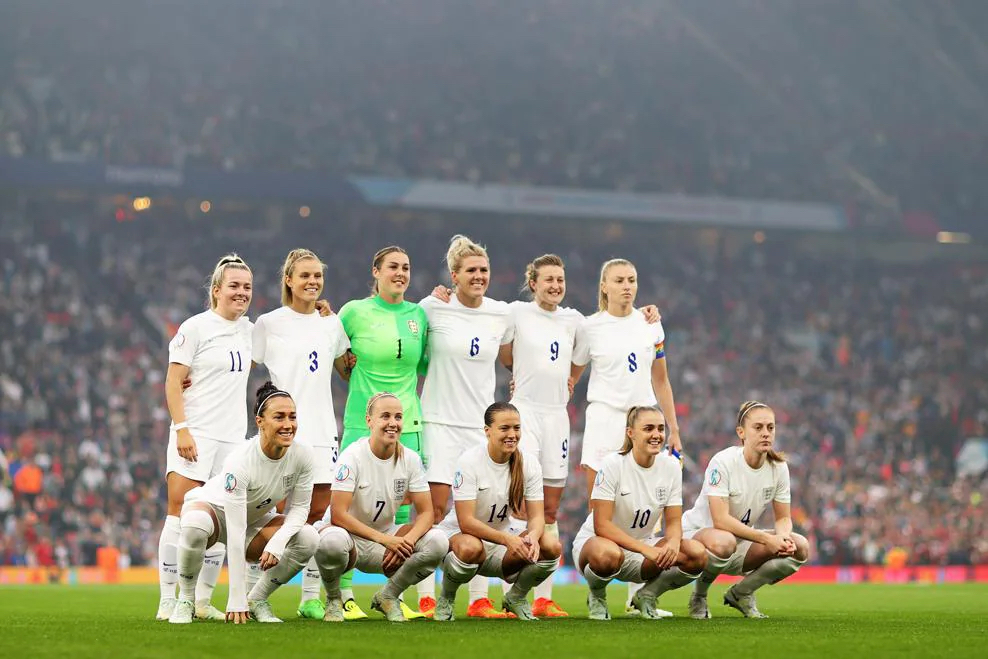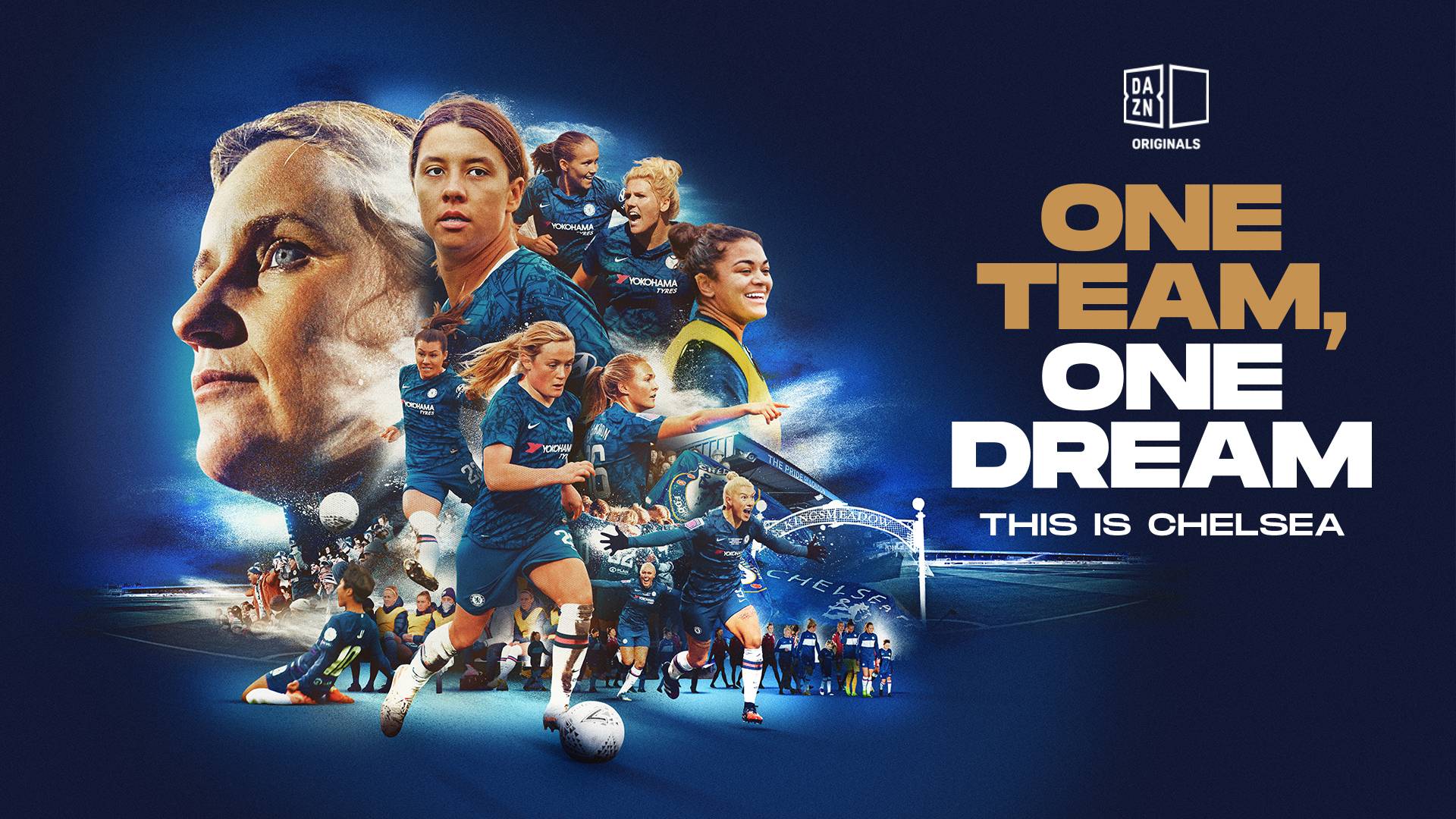
After more than 40 years of operation, DTVE is closing its doors and our website will no longer be updated daily. Thank you for all of your support.
Great expectations should be the norm for increasingly valuable women’s sports

There is no denying that there is still a gulf between women’s and men’s sports – both in profile and money involved – but the news that over 4 million Brits at home (and almost 70,000 at Old Trafford) watched England’s UEFA Women’s Euro 2022 opener against Austria is indicative that we are in a new era of women’s sport.
A major watershed moment for women’s sport in the UK was the 2019 World Cup semi-final, when a peak audience of 11.7 million viewers – equivalent to 50.8% of the available audience – watched England narrowly miss out on a place at the final.
Since then, the profile of the FA Women’s Super League (WSL) has dramatically ramped up with sell-out crowds across the country, record fees for transfers, and landmark broadcast deals both domestically and internationally. The Women’s FA Cup final between Chelsea and Manchester City set an attendance record for the competition with 49,094 people at Wembley, while women’s teams are increasingly turning to larger grounds in order to accommodate more and more fans.
Away from the UK, Barcelona has set the bar absurdly high with 91,648 Catalonian fans packed into the Camp Nou on April 24, 2022 to see their team dispatch Wolfsburg 5-1 in the UEFA Women’s Champions League semi-final first leg. The Champions League final between Barcelona and Lyon attracted a record setting live cumulative viewership of 3.6 million globally across DAZN, DAZN’s UWCL YouTube channel, and 11 free-to-air channels in Europe. DAZN, which announced a game-changing global rights deal with UEFA in 2021, said that its coverage of the UWCL’s 61 matches this season attracted 64 million views on its proprietary platform and its UWCL YouTube channel from over 230 countries and territories.
All of this should build up to a stunning FIFA Women’s World Cup in 2023 from Australia and New Zealand which has been branded as “one of the biggest sporting events in Australia since the 2000 Sydney Olympic Games”.
Not just football
This is not a phenomenon exclusive to football, though. The Women’s Sport Trust (WST) earlier this year revealed that Q1 set a new record for women’s sport in the UK.
A total of 15.1 million Brits watched 3 minutes or more of women’s sport coverage in Q1, in comparison to 5.06m in 2021 and a previous peak of 10.2 million in 2019. Over 17.9m people watched women’s sport in Q1 vs. 6.7m in Q1 2020. While the WSL dominated viewing figures, the Women’s Six Nations and ICC Women’s Cricket World Cup performed well, while motorsport’s W Series this week recorded the largest audience in the competition’s history across Sky Sports and Channel 4. Looking ahead, the upcoming second season of cricket’s The Hundred, which sees men’s and women’s matches get equal billing and prize money, should further cement women’s sports place in the mainstream as will October’s Rugby World Cup.
All of this only serves to underline a Deloitte report from late 2020 that predicted a ‘defining decade of revenue growth’ for women’s sports, growing from a baseline of just under US$1 billion in 2021.
Room for improvement
Amid all this positive momentum it is still worth noting that there is a gap and room to grow from both a broadcast and commercial perspective.
Chelsea and Manchester City managers Emma Hayes and Gareth Taylor have both called for an expansion to the Women’s Super League, which would provide both competitive and financial benefits. It is likely that these calls will emerge once again at the start of the 2022/23 season following what is set to be the most-watched Women’s Euros ever.
Elsewhere, a recent study from consultancy company Onside showed that less than half of Brits can name a brand that sponsors women’s sports, with Nike, Adidas, Barclays, Visa and Aldi being the most commonly recognised names.
This report highlights the Euros’ potential for companies that are “still reluctant to go ‘all in’ on their activation” to capture mainstream attention via their association with women’s sports.
States of play
But this wouldn’t be an exciting time to be following women’s sport if there wasn’t room to grow. A variety of factors ranging from the Covid-19 pandemic to piracy have impacted the value of men’s sports broadcast rights, with only the English Premier League retaining its value across Europe’s ‘big five’ leagues. But these external factors are only providing a smokescreen for the fact that there is little more value to be ebbed out of Europe’s top sports competitions – broadcast and sponsorship deals have largely plateaued in value, which has led clubs to partner with volatile and ethically dubious cryptocurrency and NFT funds.
From a personal perspective as a season ticket holder at Chelsea Women (I would recommend DAZN’s excellent All Or Nothing-style docuseries One Team, One Dream for a crash course in the club), I am heartened to see the growing appreciation of women’s sport because it is frankly deserved. Superstars like Serena Williams and Billie Jean King have ensured that women’s tennis has always had a high profile, but other sports are finally catching up, and fans are increasingly open to the radical idea that genitalia and gender identity have little bearing on the dramatic tension of a sports event.
The present lack of manicured commercialism in women’s sport has also enabled female athletes to be at the forefront of LGBTQ+ inclusivity and be leading political voices at a time when their male equivalents largely serve as highly-paid brand ambassadors whose publicly held opinions tend to to be about as progressive as a sideways pass in the centre circle (if not outwardly regressive). This is something that must be retained going forward for the integrity of the game, though, sadly, money talks and has a knack of stopping people from speaking their minds.
Examining women’s sport purely as a business proposition however, it is clear that this is a massive growth market that broadcasters, sponsors and investors would be foolish to ignore as the masses embrace this new era.




